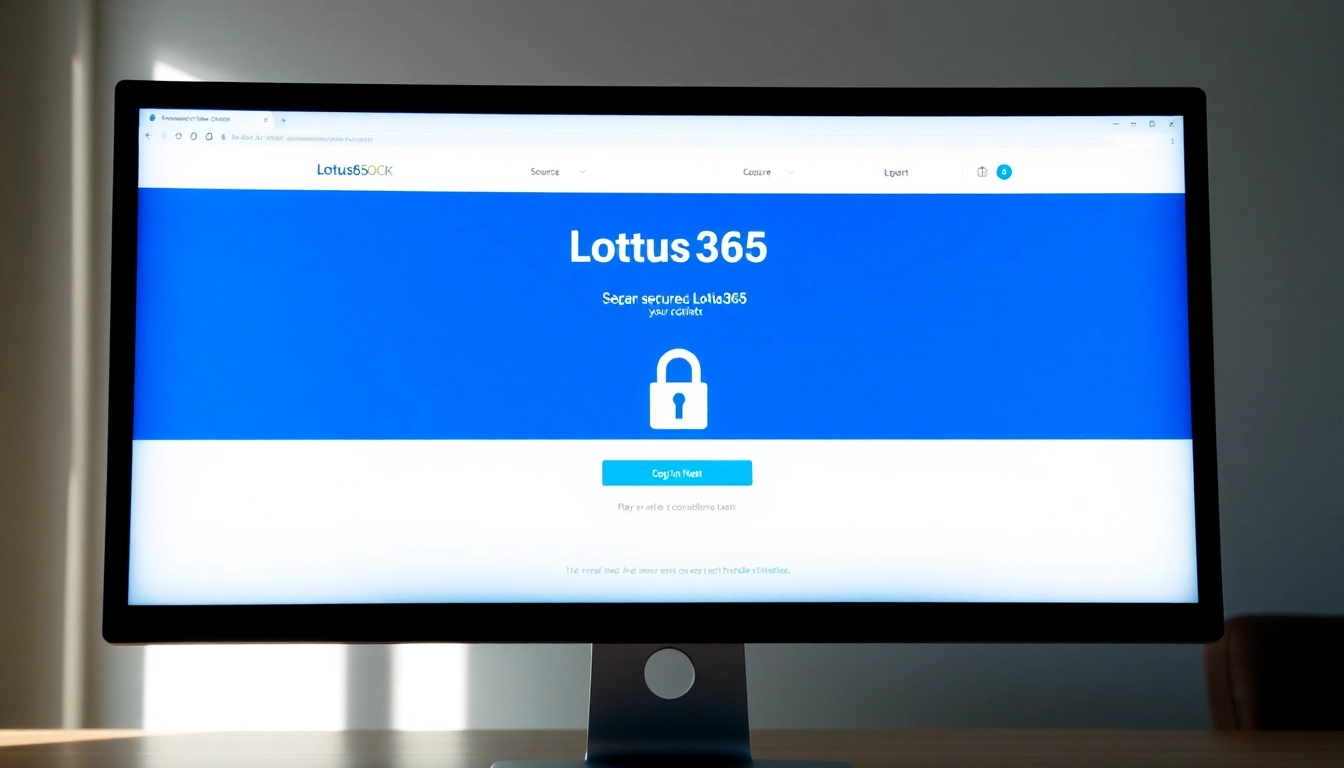Understanding Lotus365 Book’s User Account Security Features
Overview of Account Security Protocols
Securing user accounts is paramount in the digital age, especially on platforms like Lotus365 Book, which manages sensitive personal and financial information related to betting and gaming activities. Lotus365 implements comprehensive security protocols such as SSL encryption to safeguard data during transmission, multi-layer authentication processes, and strict access controls to prevent unauthorized access. Regular system audits, intrusion detection systems, and anomaly monitoring further enhance account security, ensuring a safe environment for all users. These measures collectively foster trust and demonstrate the platform’s commitment to user privacy and data integrity.
Importance of Regular Password Updates
Regularly updating your password is a cornerstone of good account security. Passwords act as the first line of defense against cyber threats and unauthorized access. On Lotus365 Book, changing your password periodically reduces the risk of breaches, especially if your previous password has been compromised in a data leak or phishing attack. Experts recommend creating strong, unique passwords that combine uppercase and lowercase letters, numbers, and special characters. Setting up reminders for routine password changes and avoiding reuse across different platforms further strengthens security posture, protecting your financial assets and personal information.
How User ID Management Enhances Security
User ID management plays a vital role in maintaining account security. On Lotus365 Book, your User ID uniquely identifies your account, allowing for personalized management and activity tracking. Proper management involves creating a distinctive User ID that is not easily guessable, avoiding common identifiers such as your name or birthdate. Additionally, updating or recovering User ID details timely ensures continuous account access, especially if compromised. Implementing multi-factor authentication linked to your User ID adds an extra layer of security, making it significantly harder for unauthorized users to gain access even if your password is compromised.
Step-by-Step Guide to Changing Your Password on Lotus365 Book
Accessing the Account Settings
To begin the process of changing your password, log into your Lotus365 Book account via the official platform. Navigate to the account or profile section, typically found in the top right corner of the dashboard. Click on ‘Settings’ or ‘Account Settings’ where security options are housed. It’s important to ensure you’re on the legitimate site, indicated by HTTPS and verified domain details, to prevent phishing risks. Once in parameters like ‘Security’ or ‘Password & Security,’ locate the ‘Change Password’ option.
Verifying Your Identity Before Changing Password
Security best practices necessitate verifying your identity before allowing password updates. Lotus365 may prompt you to re-enter your current password, answer security questions, or authorize via two-factor authentication (2FA). This verification step serves as an anti-fraud measure, ensuring only authorized users can modify sensitive account details. In some cases, a security code may be sent to your registered email or mobile number, which you must input to proceed. Never share these verification codes with anyone and keep your contact information current.
Resetting or Updating Your Password Securely
Once your identity is verified, input your new password. Follow best practices by choosing a strong, unique password—preferably longer than 12 characters, including a mix of letters, numbers, and symbols. Confirm your new password when prompted. After successfully updating, Lotus365 typically provides a confirmation message and may log you out of other devices for added security. Remember to save your new password securely, ideally using a password manager for ease and safety. Regularly reviewing and updating your credentials keeps your account resilient against evolving cyber threats.
Managing Your User ID for Better Account Control
Creating a Unique User ID
Your User ID is fundamental for account identification. Choose a distinctive, non-personally identifiable User ID that reduces vulnerability to social engineering or targeted attacks. Avoid using common names, birth dates, or easily guessable patterns. Some users opt for combinations related to their interests or random alphanumeric sequences. A unique User ID not only enhances security but also simplifies account recovery and management processes on Lotus365 Book.
Updating or Recovering User ID Details
If you suspect your User ID has been compromised or wish to change it for privacy reasons, access the account settings section dedicated to profile information. Follow platform prompts for updating your User ID, which may include verifying your identity again for security. In case of recovery, utilize any available account recovery options such as linked email, contact support, or two-factor authentication to restore access. Prompt updates and diligent recovery procedures protect your account from unauthorized access and ensure seamless user experience.
Best Practices for User ID Security
For optimal security, maintain confidentiality of your User ID and do not share it publicly or with untrusted parties. Incorporate it into multi-layer authentication processes like 2FA to prevent hijacking. Regularly review account activity logs to detect suspicious actions related to your User ID. Use different identifiers for various platforms to prevent potential cascade security breaches. Active management of your User ID complements password security, creating a robust defense system for your Lotus365 Book account.
Troubleshooting Common Issues During Password Reset
Unable to Receive Reset Email
If the password reset email does not arrive, first check your spam or junk folder. Confirm that your email address is accurate and up-to-date in your account settings. Some email providers may block automated messages; whitelisting Lotus365’s email address can resolve this. Also, ensure your inbox has sufficient storage space. If issues persist, contact Lotus365 support through verified channels for assistance with manual reset procedures or verifying your email manually.
Account Locking or Access Issues
Multiple failed login attempts often lead to temporary account locks. Wait for the lockout duration to expire, or contact customer support for unlocking procedures. To prevent future lockouts, ensure your password is strong but memorable, and avoid multiple incorrect entries. Additionally, user security policies might require verifying your identity through additional steps, such as 2FA confirmation or security questions.
Security Verification Failures
When security verification fails—such as incorrect answers to security questions or 2FA codes—it’s crucial to verify your contact details are correct. For 2FA, request a reset or alternative method from Lotus365 support. Regularly updating your contact info ensures smooth verification. Employing backup methods and keeping recovery options active reduces the risk of being locked out due to verification failures.
Enhancing Account Security and Privacy on Lotus365 Book
Using Two-Factor Authentication (2FA)
Implementing 2FA significantly enhances account security by requiring a second verification step—usually a code sent via SMS or generated in an authenticator app—beyond just the password. Lotus365 offers 2FA options that, once enabled, protect against unauthorized access even if your password is compromised. Regularly updating your 2FA credentials and devices ensures ongoing security and minimizes risks associated with stolen or lost authentication tokens.
Keeping Your Contact Information Up-to-Date
Ensure your registered email and mobile number are current. Accurate contact details are critical for receiving security alerts, reset codes, and verification messages. Periodic verification of these details prevents interruptions in account recovery and security notifications. Use your account settings to update information promptly and confirm receipt of test messages or emails to verify accuracy.
Best Tips for Maintaining Account Integrity
Maintain a vigilant security routine, including monitoring login activity, enabling 2FA, and setting strong, unique passwords. Avoid sharing login credentials, refrain from using public Wi-Fi for sensitive activities, and be cautious of phishing attempts. Regularly review account permissions and connected devices, and consider periodic security audits. Staying informed about emerging cybersecurity threats and adhering to best practices safeguards your Lotus365 Book account and personal assets effectively.



